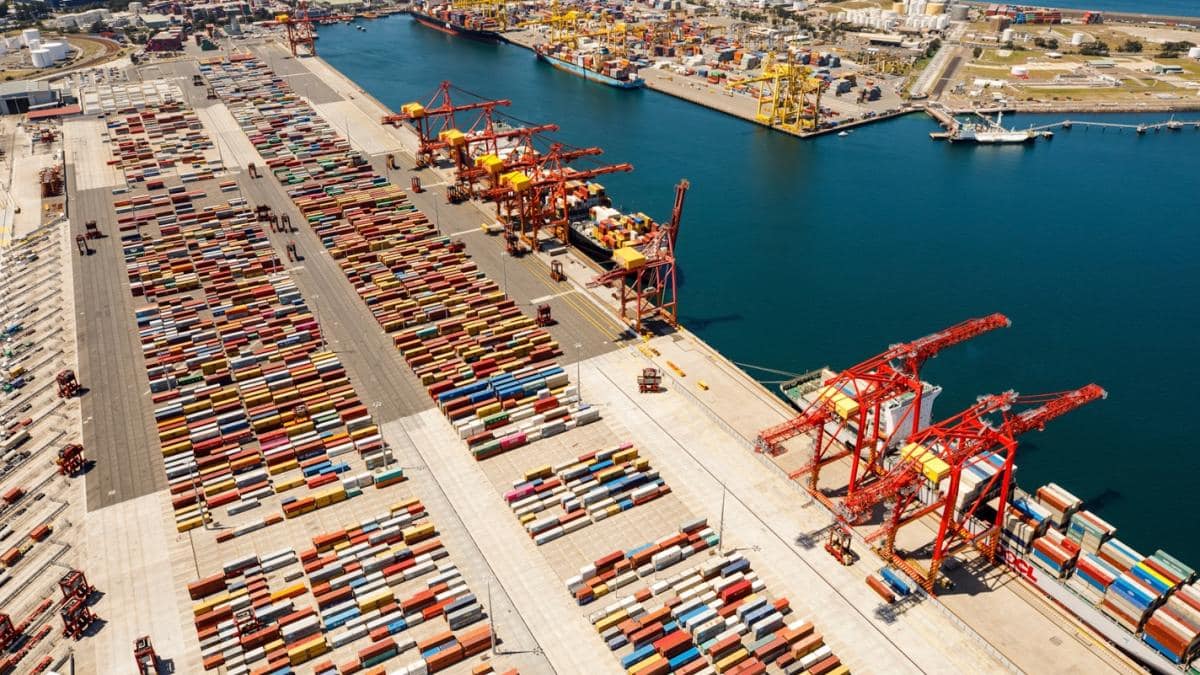NSW Ports CEO Marika Calfas penned the following Op-Ed that was published in The Australian today (Wednesday, 31 August 2022).
During my 20 years in the port sector, I have had a firsthand view of the critical importance of ports to Australian society. The nation’s ports are the beating heart of our economy, connected by port supply chains as the arteries servicing the needs of businesses and consumers. Without ports, we would struggle to meet our everyday needs.
Global shipping disruptions during Covid-19 have elevated public awareness of ports – with “supply chains” now in vogue as a topic of conversation. Yet ports are but one part of an interconnected supply chain that involves production, shipping, landside transport (trucks and trains), warehousing and last-mile distribution. A disruption to any part of that supply chain has knock-on effects. Too often, ports are blamed for issues elsewhere in the supply chain.
Australia’s ports and port supply chains have proven to be more resilient than those around the world. We have not experienced the queues of ships, trucks and trains that have been a constant feature from Asia to the US and Europe.
Our ports have dealt with unreliable ship arrivals – with less than 30% to 40% on time. While at overseas ports import containers are staying for long periods and congesting terminals, at Port Botany they are being cleared within 3 to 4 days. Where globally trucks are queuing for hours to be serviced at ports, at Port Botany trucks can arrive, collect a container and depart within about 30 minutes.
Shipping lines have increased ocean freight rates globally by 300-500%, affecting Australian importers and exporters. Shipping line charges now make up around 80% of the total cost to transport a container from overseas to its end destination in NSW (compared with 58% pre-Covid). These cost increases are not driven by port charges.
Australia is a mere 1% of the global container market, with little influence on global supply chains, but our ports are critical domestically. In NSW, Port Botany is the gateway for containers and also handles one-third of the State’s fuel supply and almost all its demand for bitumen, LPG and bulk chemicals for manufacturing.
Port Botany contributes $10.7 billion a year to NSW Gross State Product and supports more than 52,000 jobs. Due to its national significance, Port Botany has been purposefully developed over its 40 years to meet the ongoing trade growth needs of the State, through private and public investment.
Despite this, some are calling for investment in a new container port at Newcastle. Such calls are based on claims the proposed terminal would deliver more competitive services and pricing. This rationale is not supported by the facts.
Population drives container distribution in NSW, with Greater Sydney accounting for more than 60% of NSW’s population. NSW is an import dominant State – with Port Botany handling 1.4 million TEU (the standard measure of a shipping container) of full container imports but only 420,000 TEU of full container exports (only half of which originate from regional NSW). The State’s biggest export is empty containers.
Of NSW’s import containers, 80 per cent travel no further than 40 kilometres from Port Botany, servicing Sydney’s population and business centres. Locating NSW’s container port at the heart of this market reduces landside travel distances, costs, congestion and greenhouse gas emissions.
By contrast, most containers arriving at Newcastle would need to be transported by truck to Greater Sydney, some 200 kilometres away. This would add more than 5000 truck movements a day on the M1 between Newcastle and Sydney, worsening congestion and greenhouse gas emissions.
Billions of taxpayer dollars would need to be spent on connecting infrastructure between Newcastle and Sydney.
A Newcastle container terminal wouldn’t generate more trade volume but rather would share existing volume with the three competing stevedores at Port Botany. This would mean higher costs for users, as the costs to develop the new terminal need to be recovered. This additional cost is premature, as Port Botany is less than half full.
NSW’s container port policy supports a second container terminal – but at Port Kembla and only once Port Botany approaches capacity; to avoid premature investment that adds to supply chain costs. This makes sense, based on the specific features of NSW’s container supply chains.
The importance of ports to our lives and work cannot be overstated. Port planning in NSW is too important to be based on anything less than a solid understanding of our port supply chains.
You can download a copy of the Op-Ed here.

